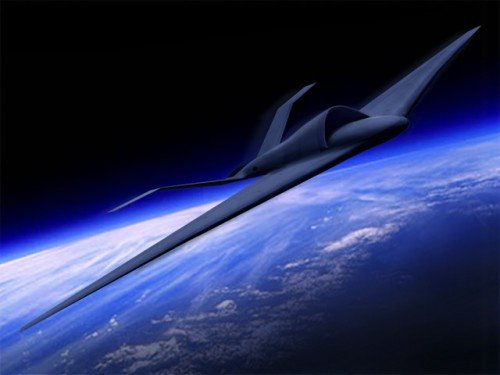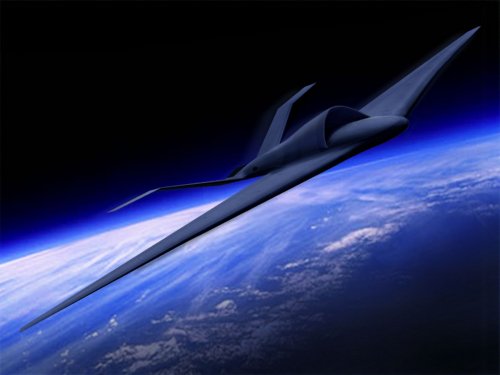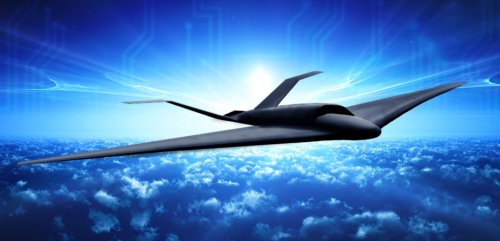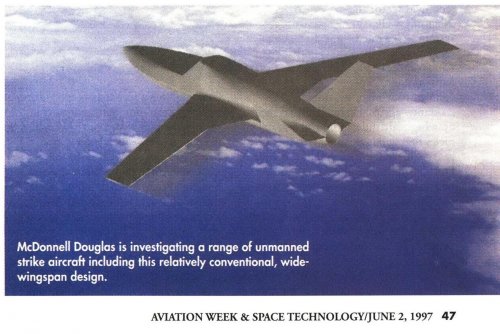You are using an out of date browser. It may not display this or other websites correctly.
You should upgrade or use an alternative browser.
You should upgrade or use an alternative browser.
Lockheed Martin TR-X (RQ-X/UQ-2)
- Thread starter bobbymike
- Start date
- Joined
- 3 June 2006
- Messages
- 2,843
- Reaction score
- 2,546
bring_it_on
I really should change my personal text
- Joined
- 4 July 2013
- Messages
- 3,123
- Reaction score
- 2,239
Air Force Skeptical Of Lockheed U-2 Replacement Advances Insidedefense.com
Lockheed Martin is courting the Air Force with a U-2 replacement, but service officials are not expressing enthusiasm for a new platform.
While Lockheed has not made a formal proposal yet to the Air Force, the company presented its high altitude TR-X program to the media Sept. 14. The company is proposing a stealthy, high altitude intelligence, surveillance and reconnaissance platform which would leverage the existing U-2 engine, according to Scott Winstead, Lockheed’s strategic business manager for the U-2 program. The platform could be fielded as early as 2025, a Lockheed spokesman said.
During a Sept. 14 media roundtable, Air Force Gen. Robert Otto, deputy chief of staff for ISR, expressed skepticism over the TR-X, particularly regarding its stealth capabilities, which he said could drive up the cost of the platform.
“If we were going to look at a new platform, the question I’d ask is what else does that buy us?” he said. “It could be something worth looking at, but I don’t know yet.”
While the Global Hawk still unmanned air vehicle has several upgrades pending before it can reach parity with the U-2, those changes would cost significantly less than a new platform, according to Otto. Estimates on the cost of upgrading the Global Hawk with U-2 sensors have shifted, but Otto indicated that the addition of an electro-optical sensor and Optical Bar Camera are surmountable challenges for the Global Hawk. A Defense Department Cost Assessment and Program Evaluation analysis also showed Global Hawk’s cost per flying hour decreases in the late 2020’s, he said.
“I think we’ve got to come up with a solution to be able to image the Gaza Strip (and) Golan Heights in a similar image,” Otto said. “That would imply either finding a way to make the wide area sensor work or another payload adapter to put the Optical Bar Camera in there.”
Lockheed’s TR-X pitch may be unsolicited, but company officials argued the first generation U-2 platform also emerged out of an unsolicited program in its Skunk Works. The company is proposing to get ahead of the Air Force’s needs, even if the service has not asked for many of the upgrades that would come on the TR-X platform.
Lockheed is proposing an aircraft with longer wings for high altitudes, though its U-2 engine would only be able to lift the TR-X to 73,000 feet. The TR-X would also include multiple line of sight links to support communications gateways and collaborative operations, a new see and avoid system and electronically scanned array radar that would double the current U-2’s range, Winstead said.
“If you’re looking at the 2030-40 timeframe, how much is technology going to advance in our adversary’s portfolio?” Winstead said. “The new design allows you bring a modular payload, so you can be adaptable.” -- Leigh Giangreco
Steve Pace
Aviation History Writer
- Joined
- 6 January 2013
- Messages
- 2,266
- Reaction score
- 168
FighterJock
ACCESS: Top Secret
- Joined
- 29 October 2007
- Messages
- 4,227
- Reaction score
- 3,420
flateric said:
Interesting article, thanks for the link flateric.
Came across this video about the TR-X on Youtube, just after I had posted.
phrenzy
as long as all they ask me about is the air war...
- Joined
- 31 October 2013
- Messages
- 277
- Reaction score
- 15
I assume this is a solution looking for a requirement like the SR-72 which is why we're hearing about it directly from LM.
The emphasis on communications makes me think that one of it's primary jobs will be acting as a relay node to allow aircraft/ships/ground forces with otherwise incomparable comms to communicate as the couple of converted civilian aircraft have been doing I've Afghanistan and elsewhere (can't remember the program name off hand).
Do we know much about whether special forces units are set up to talk directly with stealth aircraft with LPI comms?
The emphasis on communications makes me think that one of it's primary jobs will be acting as a relay node to allow aircraft/ships/ground forces with otherwise incomparable comms to communicate as the couple of converted civilian aircraft have been doing I've Afghanistan and elsewhere (can't remember the program name off hand).
Do we know much about whether special forces units are set up to talk directly with stealth aircraft with LPI comms?
- Joined
- 3 June 2011
- Messages
- 17,339
- Reaction score
- 9,082
phrenzy said:I assume this is a solution looking for a requirement
The U-2 won't last forever.
V8Interceptor
ACCESS: Restricted
- Joined
- 3 March 2009
- Messages
- 30
- Reaction score
- 2
I wonder if this Design study might be for an "optionally manned (er, inhabited)" aircraft?
The various airframers have referred to that technology as a possible option in their presentations for Hypothetical 6th generation fighter aircraft.
The various airframers have referred to that technology as a possible option in their presentations for Hypothetical 6th generation fighter aircraft.
- Joined
- 1 April 2006
- Messages
- 10,730
- Reaction score
- 6,773
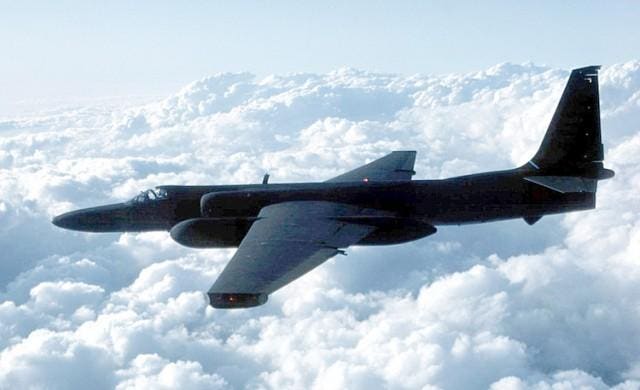
Lockheed Skunk Works Unveils Plan For High-Flying Recon Drone
Lockheed Martin's secretive Skunk Works has devised a high-flying reconnaissance drone that can peer deep inside hostile countries like North Korean without entering their air space.
 www.forbes.com
www.forbes.com
Attachments
- Joined
- 21 January 2015
- Messages
- 10,688
- Reaction score
- 12,357
flateric said:
Lockheed Skunk Works Unveils Plan For High-Flying Recon Drone
Lockheed Martin's secretive Skunk Works has devised a high-flying reconnaissance drone that can peer deep inside hostile countries like North Korean without entering their air space.www.forbes.com
Not your fault but I refuse to visit a site that demands you turn off your ad blocker.
Flyaway said:Not your fault but I refuse to visit a site that demands you turn off your ad blocker.
Try it on your mobile and switch to reader mode in your mobile browser.
- Joined
- 21 January 2015
- Messages
- 10,688
- Reaction score
- 12,357
Changed its name again.
Lockheed's 30-aircraft TR-X plan priced at $3.8 billion
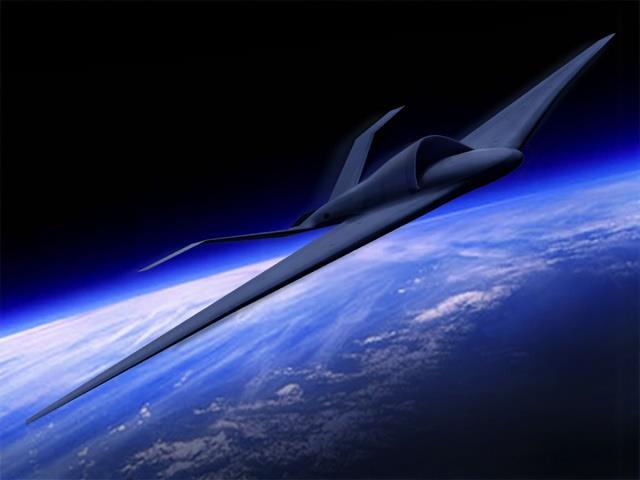
 www.flightglobal.com
www.flightglobal.com
Lockheed's 30-aircraft TR-X plan priced at $3.8 billion

Lockheed's 30-aircraft TR-X plan priced at $3.8 billion
Lockheed Martin's plan to construct a fleet of 30 high-altitude, single-engined tactical reconnaissance aircraft from cannibalised U-2S Dragon Lady and RQ-4B Global Hawk components would take 10 years and cost approximately $3.8 billion if adopted, a company official says.
- Joined
- 9 October 2009
- Messages
- 19,999
- Reaction score
- 10,507
Flyaway said:Changed its name again.
Lockheed's 30-aircraft TR-X plan priced at $3.8 billion
https://www.flightglobal.com/news/articles/lockheeds-30-aircraft-tr-x-plan-priced-at-38-bill-423190/
And no longer optionally manned, I see.
- Joined
- 3 June 2011
- Messages
- 17,339
- Reaction score
- 9,082
"single-engined tactical reconnaissance aircraft from cannibalised U-2S Dragon Lady and RQ-4B Global Hawk components would take 10 years"
It didn't take that long to go from a clean sheet to a flying Blackbird.
It didn't take that long to go from a clean sheet to a flying Blackbird.
- Joined
- 9 October 2009
- Messages
- 19,999
- Reaction score
- 10,507
sferrin said:"single-engined tactical reconnaissance aircraft from cannibalised U-2S Dragon Lady and RQ-4B Global Hawk components would take 10 years"
It didn't take that long to go from a clean sheet to a flying Blackbird.
Indeed.
- Joined
- 2 August 2006
- Messages
- 3,175
- Reaction score
- 1,160
sferrin said:"single-engined tactical reconnaissance aircraft from cannibalised U-2S Dragon Lady and RQ-4B Global Hawk components would take 10 years"
It didn't take that long to go from a clean sheet to a flying Blackbird.
Re-read it. Their plan involves using U-2 components from "planes flying" as them come in for their scheduled rebuild. It's that rebuild schedule, based on the life of the U-2 airframes and the Global Hawks, that is making it take 10 years to build 30 of them. If they were building them from scratch, I am sure it would be much faster. IIRC, the Blackbirds weren't rebuilt using components of previously flying operational aircraft.
- Joined
- 21 April 2009
- Messages
- 13,173
- Reaction score
- 6,069
TR-X Goes Black
—John A. Tirpak3/17/2016
Lockheed Martin will formally pitch the Air Force a program to replace the U-2 and Global Hawk in the coming months, Scott Winstead, the company’s strategic business manager, told reporters Tuesday. The aircraft will have low-observable, or stealth features, so previous images of what Lockheed calls the TR-X are obsolete, and the company won’t release new ones, he said. After long analysis, Lockheed determined that USAF will run seriously short of strategic air-breathing reconnaissance capacity and capability starting when the U-2 retires circa 2019, through the Global Hawk’s mid-2030s retirement. The jet would not be stealthy enough to survive in the toughest air defenses, but could be “risked” if a commander deems it necessary, Winstead said. Lockheed determined the “sweet spot” for operations and efficiency is 70,000 feet with one engine, giving the aircraft a 300-mile look over a target country’s borders. The company would re-use the U-2’s GE F118 engine, and sensors and software from the U-2 and Global Hawk to reduce costs, as the fleet transitions to a single-type unmanned platform. Though 77,000 feet was more operationally useful and survivable, “you need two engines to get there,” Winstead said, and the cost caused Lockheed to discard the two-engine option. Existing 45KVA generators—with ample room for growth—would also be used to power laser sensors and radars, and the wingspan would be the same as the Global Hawk’s to avoid USAF having to build new hangars. The jet would be autonomically air-refuelable to extend its mission time to around 40 hours, Winstead reported; longer than either the U-2’s 12-hour maximum or Global Hawk’s 22-hour limit. (See also High-Altitude ISR at Risk from the March issue of Air Force Magazine.)
—John A. Tirpak3/17/2016
Lockheed Martin will formally pitch the Air Force a program to replace the U-2 and Global Hawk in the coming months, Scott Winstead, the company’s strategic business manager, told reporters Tuesday. The aircraft will have low-observable, or stealth features, so previous images of what Lockheed calls the TR-X are obsolete, and the company won’t release new ones, he said. After long analysis, Lockheed determined that USAF will run seriously short of strategic air-breathing reconnaissance capacity and capability starting when the U-2 retires circa 2019, through the Global Hawk’s mid-2030s retirement. The jet would not be stealthy enough to survive in the toughest air defenses, but could be “risked” if a commander deems it necessary, Winstead said. Lockheed determined the “sweet spot” for operations and efficiency is 70,000 feet with one engine, giving the aircraft a 300-mile look over a target country’s borders. The company would re-use the U-2’s GE F118 engine, and sensors and software from the U-2 and Global Hawk to reduce costs, as the fleet transitions to a single-type unmanned platform. Though 77,000 feet was more operationally useful and survivable, “you need two engines to get there,” Winstead said, and the cost caused Lockheed to discard the two-engine option. Existing 45KVA generators—with ample room for growth—would also be used to power laser sensors and radars, and the wingspan would be the same as the Global Hawk’s to avoid USAF having to build new hangars. The jet would be autonomically air-refuelable to extend its mission time to around 40 hours, Winstead reported; longer than either the U-2’s 12-hour maximum or Global Hawk’s 22-hour limit. (See also High-Altitude ISR at Risk from the March issue of Air Force Magazine.)
FighterJock
ACCESS: Top Secret
- Joined
- 29 October 2007
- Messages
- 4,227
- Reaction score
- 3,420
flateric said:
I think that was before McDonnell Douglas got taken over by Boeing.
- Joined
- 1 April 2006
- Messages
- 10,730
- Reaction score
- 6,773
Captain O. agreesFighterJock said:I think that was before McDonnell Douglas got taken over by Boeing.
- Joined
- 21 January 2015
- Messages
- 10,688
- Reaction score
- 12,357
High-altitude stakes soar for U-2 successor
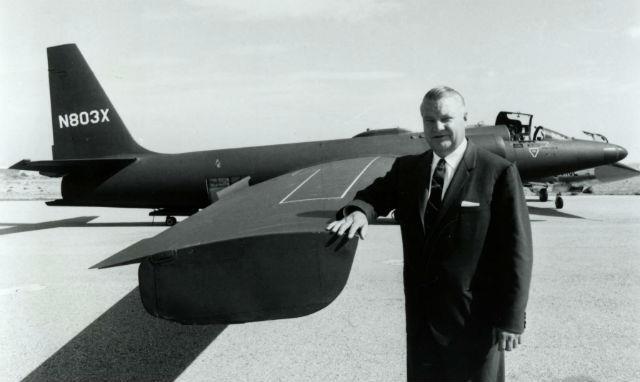
 www.flightglobal.com
www.flightglobal.com

OPINION: High-altitude stakes soar for U-2 successor
Since the Space Shuttle's final mission in 2011, Americans have had to explain to their children that the only way to space now is via a Russian Soyuz spacecraft, blasting off from Kazakhstan. This storyline is only being corrected with the development of the Boeing CST-100 Starliner and SpaceX...
- Joined
- 21 January 2015
- Messages
- 10,688
- Reaction score
- 12,357
Lockheed’s TR-X Reconnaissance Aircraft Will Have Stealthy Shape, Skin
Aviation Week & Space Technology
As Russia and China develop advanced missile technologies that can shoot down aircraft from greater distances, the U.S. Air Force’s long-serving reconnaissance platforms—Lockheed Martin’s manned U-2 and Northrop Grumman’s Global Hawk unmanned aircraft systems (UAS)—are being forced to operate farther and farther from enemy borders. Lockheed Martin believes its Skunk Works has the answer to this challenge, revealing previously unknown details about the ...
 m.aviationweek.com
m.aviationweek.com
Aviation Week & Space Technology
As Russia and China develop advanced missile technologies that can shoot down aircraft from greater distances, the U.S. Air Force’s long-serving reconnaissance platforms—Lockheed Martin’s manned U-2 and Northrop Grumman’s Global Hawk unmanned aircraft systems (UAS)—are being forced to operate farther and farther from enemy borders. Lockheed Martin believes its Skunk Works has the answer to this challenge, revealing previously unknown details about the ...
Lockheed’s TR-X Reconnaissance Aircraft Will Have Stealthy Shape, Skin | Aviation Week Network
Successor to the U-2, the unmanned TR-X, will eventually have a stealthy shape and skin, allowing it to penetrate deep into enemy territory.
- Joined
- 21 January 2015
- Messages
- 10,688
- Reaction score
- 12,357
Tangentially related.
http://breakingdefense.com/2017/03/u-2-expert-says-global-hawk-just-cant-compare/
Chris Pocock may know more about the U-2 than anyone who doesn’t possess a very high security clearance. He’s written four books about the planes and is passionate about the black beauties. Here’s his take on whether Northrop Grumman’s Global Hawk can rival or surpass the capabilities of the U-2. Read on. The Editor.
http://breakingdefense.com/2017/03/u-2-expert-says-global-hawk-just-cant-compare/
- Joined
- 21 January 2015
- Messages
- 10,688
- Reaction score
- 12,357
It seems the U-2itself still has plenty of life left in it.
OPINION: It may be ageing, but U-2S could be more relevant than ever

 www.flightglobal.com
www.flightglobal.com
OPINION: It may be ageing, but U-2S could be more relevant than ever

OPINION: It may be ageing, but U-2S could be more relevant than ever
On its first overflight mission of the Soviet Union 62 years ago, the Lockheed U-2 was tracked for the entire mission.
- Joined
- 9 October 2009
- Messages
- 19,999
- Reaction score
- 10,507
From the looks of the news below, it looks like the TR-X has been at least badly delayed:
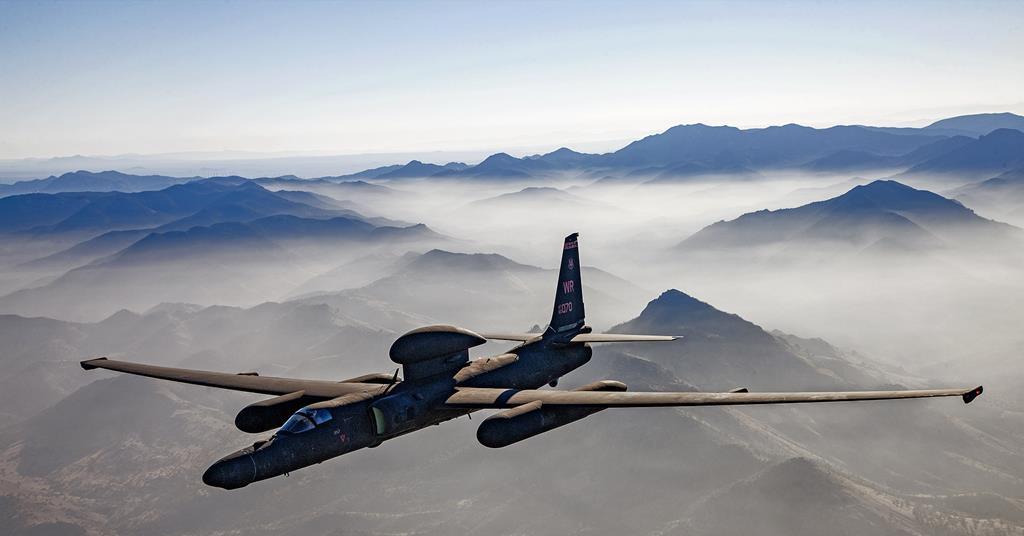
 www.flightglobal.com
www.flightglobal.com

U-2 spyplane fleet gets new high-powered camera
The electro-optical and infrared camera is to provide more precise, long-range tracking of stationary or moving targets in a wider range of weather conditions.
Similar threads
-
Lockheed P-420 'LightStar' UAV
- Started by Mr London 24/7
- Replies: 18
-
Lockheed Martin - Multi purpose long endurance (MPLE) UAV
- Started by fightingirish
- Replies: 3
-
[The Real] Lockheed Martin X-44A
- Started by XP67_Moonbat
- Replies: 44
-
Lockheed Martin Skunk Works Hybrid Wing Body (HWB)
- Started by fightingirish
- Replies: 102
-

